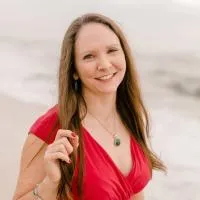Contents
I’m answering your questions about photography websites, business, marketing, SEO, and more.
You can ask me anything. I’ll try to answer within 24 hours, and the most useful questions get featured here on the newsletter too. Need any help with your website? Don’t hesitate to write, I’m all ears.
Thanks to John, Laura, Marian & Ariel for these questions.
Check out my answers below, and jump in with your own thoughts by sending me a message or leaving a comment below.

“What is the best way to show multiple galleries on a site?”
Even when you want to showcase more range in your photography work, you have to resist the urge to display too many photos together.
There are exceptions to this, of course (like when you have a large archive of images for sale as prints or downloads). But just for portfolio pages, for displaying your best work to prove your skills, limit each portfolio gallery to around 20 images if you can.
That being said, you can still have multiple separate portfolio galleries/pages, one for each of the main specialties you cover.
And then one single main one, placed first, that acts as a “best of” collection of your entire work.
“Can I repeat keywords in my image IPTC info?”
Full question:
“Hi! I am an artist doing seo image optimization for my ecommerce site, you have a lot of great resources! I am adding IPTC info to my product and gallery page images. When adding IPTC in lightroom, you can add a list of keywords associated with the image. Would it be considered keyword stuffing to re-use phrases like “my brand name” and “fluid acrylic painting” “acrylic pour painting” in the IPTC info of mostly every image? These are relevant keywords to almost every product and brand image on my site.”
I think it’s safe, it would not be considered keyword stuffing.
With text content on the page (via ALT tags, titles, etc.) it’s a different thing. But IPTC info is not yet considered in the same way by Google. They only recently started looking into IPTC info anyway.
I can’t be 100% sure here, but here’s another argument: repeating the same phrases is a common practice by agencies who have a large stock photography archive, as a way to properly “tag” their images, especially when dealing with multiple photographers. So I think it’s not a problem for SEO.
“Is it OK to use the same phrase (or a variation of it) across multiple pages of the site?”
Full question:
“For the text content of pages (alt tags, titles and other metadata descriptions), is it okay to use the same keyword phrase/a variation of it across multiple pages of the site? For instance, “fluid art” might appear a few times on my home page, but also on a blog page if the blog topic is about “fluid art techniques” and maybe it appears again on my store page as “fluid art painting”? It would be hard not to re-use terms like these on many pages.”
The example you gave is perfectly fine, because you’re using variations. “Fluid art” is the common prefix, but they all expand into different longer phrases, and that’s perfectly fine. More than fine, in fact: “long-tail keywords” allow you to cover a wider range of traffic sources.
Google Search Console is a must-use tool for tracking all of this, by the way. Hope you’re using it.
The only thing to avoid is using the exact same long phrase tens/hundreds of times throughout your site. Google hates seeing repeated content.
“What do you recommend for me to do with the ‘Yoast internal linking’ or ‘Cornerstone content’ elements, if anything?”
Yoast internal linking simply suggests other pages in your website that you might want to link to.
You don’t need to use all those links, but look into that widget for ideas on what relevant pages you could link, but it’s optional. I think you already do a pretty good job with internal links to/from your portfolio pages, so you can ignore that Yoast widget.
To set something as “cornerstone content” means it’s one of the most important pages in your site. This feature is most often used for blogging websites where a few posts are “featured” and driving the most traffic.
What marking something as “cornerstone content” will do is tweak Yoast’s recommendations into linking more often to those two pages, in an effort to make them look more important in Google’s eyes too.
Read more about this feature in Yoast here.
“[SPECIALTY photography LOCATION] is one of the top searches that brings people to my site. Is there anything I could do with a blog post to amplify that?”
First of all, I would argue that “SPECIALTY photographer LOCATION” is more important, for reasons explained here.
That’s getting comparable clicks, but at a much better CTR, meaning that people searching on Google resonate with your SEO tags and what your site has to offer more, it’s a better fit:

The main goal (for both “photography” and “photographer” variants) is to improve the position => ending up on page 1 for them (so position < 10), which will lead to more clicks.
The blog can somewhat help with this if you link back to the homepage with that respective anchor text, basically telling Google again that your homepage is about that topic.
But do you need to write a new blog post to accomplish this? Not really. You’d get the same effect, theoretically, from just editing one of your most popular posts and entering such a link there.
“Can I display the site name in the browser tab on all pages?”
While this change is technically possible, it’s highly NOT recommended.
The text that shows up in the browser tabs comes from the HTML title tag of each page, which also gets used by Google in search results, and has a big impact on the SEO of the site.
Changing them all to the same text (the site or photographer name in this case) would negatively affect the site’s SEO.
I’d also argue that it also doesn’t help user-experience: I prefer seeing what page each browser tab represents, when having multiple tabs, instead of just the site/photographer name.
Your turn: ask me anything :-)
Send your questions to me via email or on my social media channels (links in the footer), happy to help.













